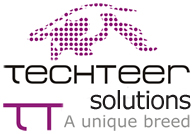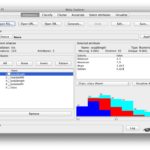There have been a few central changes in the computerized promoting scene lately. In his new online class Rand Fishkin he investigated how advertisers can stay aware of 2024’s greatest issues in advanced showcasing.
It’s reasonable there has been a huge effect by computer based intelligence on advanced showcasing however that is not all. Old, solid strategies, (for example, the presentation publicizing blast, the Website optimization + content flywheel, the powerhouse showcasing takeover, and the large, sensational media send off) essentially don’t cut it any longer.
Simultaneously, different powers have become undeniably more compelling. We’ll separate each of these, looking at the details and difficulties, and proposition key focus points to proceed with your showcasing achievement.
-
The passing of identifiable martech
Advertising innovation once vowed to track and ascribe the whole client venture, from revelation to buy, permitting advertisers to allot dollar values to each step. Be that as it may, this accessibility has altogether declined because of information security regulations, expanded utilization of promotion blockers, and changes in treat viability. Multi-gadget ventures and the mix of applications and sites have additionally convoluted following, putting forth it challenging to ascribe promoting attempts to deals precisely.
The decrease in identifiable information has made it moving for advertisers to legitimize interests in happy, Website optimization, and other promoting drives. Google’s syndication power has prompted an expansion in ‘zero-click’ look (where clients find answers straightforwardly on the query items page without visiting sites). This pattern is especially articulated in the EU, where almost 66% of searches end without a tick, and it’s just somewhat lower in the US.
-
The ascent of dull traffic
The ascent of dim traffic, otherwise called dull social, is a huge pattern influencing advertisers’ capacity to track and credit site visits precisely. Many organizations find that their showcasing endeavors frequently affect individuals catching wind of them through web recordings, online courses, or virtual entertainment posts. Be that as it may, when these people in the long run visit the organization’s site, the traffic is regularly credited to coordinate visits or natural hunt, concealing the genuine wellsprings of impact.
For example, SparkToro’s own investigation show that 76% of their guests come from direct traffic and 13% from natural hunt, representing 90% of their complete traffic. In any case, this information is misdirecting as it doesn’t mirror the genuine sources that drove clients to look for or straightforwardly type in the organization’s URL. In all actuality, quite a bit of this traffic probably starts from different stages like WhatsApp, Slack, LinkedIn, Instagram, Facebook, TikTok, and Dissension, where individuals examine and share connects to the organization’s substance.
-
The enormous lie of promoting attribution
We’ve seen situations where organizations like Airbnb have radically diminished or wiped out their promoting financial plans without encountering a decrease in results. This peculiarity raises doubt about the viability of conventional promoting and our capacity to credit showcasing endeavors precisely.
To show this issue, consider this tale about a pizza shop proprietor in Milan who employed three teens to circulate flyers with markdown codes. One young person showed up profoundly fruitful, yet it was subsequently found he was just distributing flyers to individuals previously making a beeline for the pizza shop. This tale matches how organizations like Google and Facebook may be assuming praise for deals that would have happened at any rate, utilizing their immense information to target promotions at individuals who were probably going to make a buy notwithstanding.
Attribution demonstrating has forever been imperfect and is turning out to be progressively temperamental because of elements like protection regulations, the utilization of different gadgets and programs, and the ascent of dull traffic.
-
The finish of the rising tide
For the last 25 years, we’ve seen each chart connected with web utilization, web index use, and web clients reliably moving vertically. In any event, during monetary slumps, similar to the 2009 monetary emergency, we actually saw more individuals web based, utilizing applications, and taking part in online business exercises contrasted with earlier years. This pattern of ceaseless development has been a steady in the computerized scene.
Be that as it may, this period of reliable development is reaching a conclusion. We’re currently seeing a level or even decrease in rush hour gridlock accessible from significant sources like Google and Facebook. The development rates are no longer what they used to be. For example, Facebook’s everyday dynamic client development and online media spend in the US have been declining for quite a while.
-
Living in a zero-click world
We should now consider the peculiarities of ‘zero-click content’ and ‘zero-click promoting’. Significant stages like Facebook, Twitter, LinkedIn, and Google are progressively keeping clients on their own destinations as opposed to sending traffic to outside sites. These stages are focusing on local substance and, surprisingly, rebuffing content that contains outbound connections. This pattern is advantageous for clients yet baffling for distributers and content makers. Tests demonstrate the way that posts without connections can get up to multiple times more reach than those with joins across different stages.
While looking at reference traffic sources, we can see that Google overwhelms, sending around 63% of all alluding traffic. Joined with Microsoft and Bing, web crawlers represent around 70% of all traffic references. Be that as it may, almost 50% of all reference traffic from these enormous destinations goes to only the main 100-200 areas, leaving medium-and little measured organizations with altogether less traffic than previously.
Curiously, references don’t recount the entire story of impact. While scan represents 70% of references, it just addresses around 10% of online consideration. Most of online time is spent on efficiency apparatuses, web-based entertainment, video and sound stages, games, and news locales. This error proposes that zeroing in exclusively on rush hour gridlock sources might prompt an overemphasis on search, while ignoring other compelling channels where individuals really consume content and are affected in their choices.



